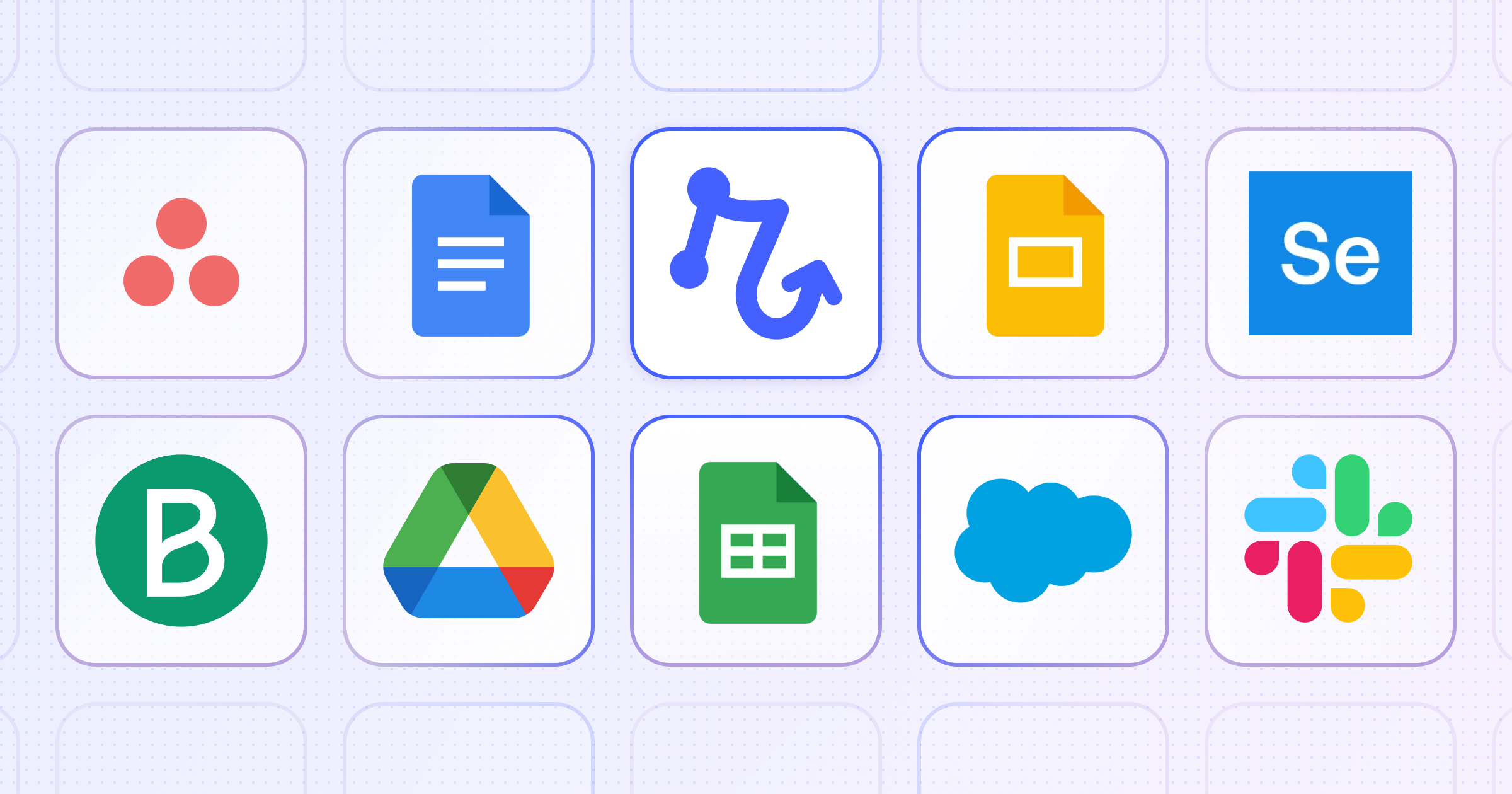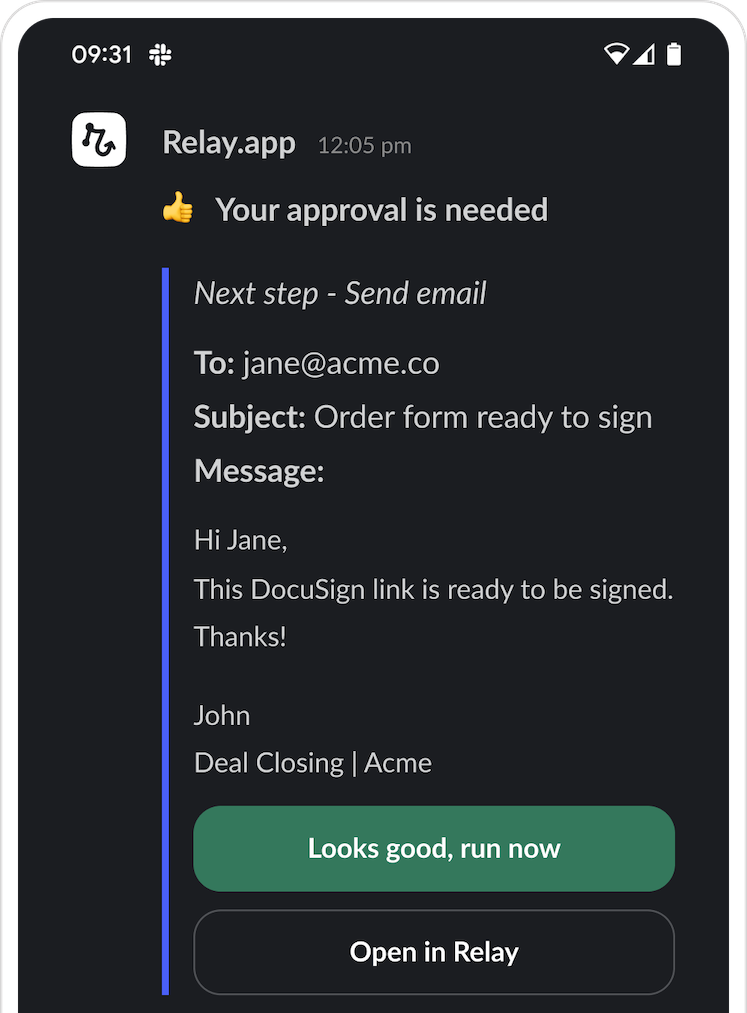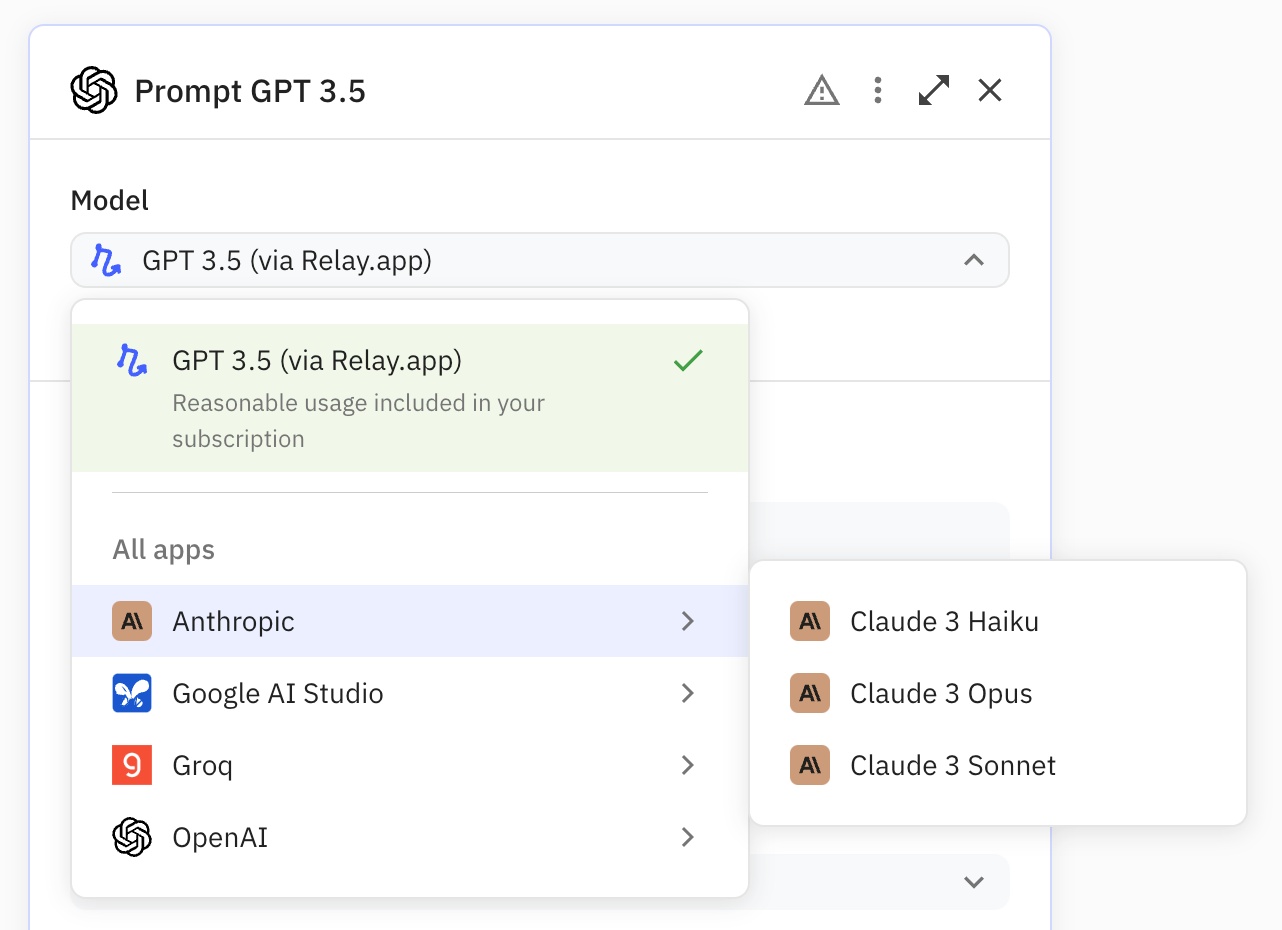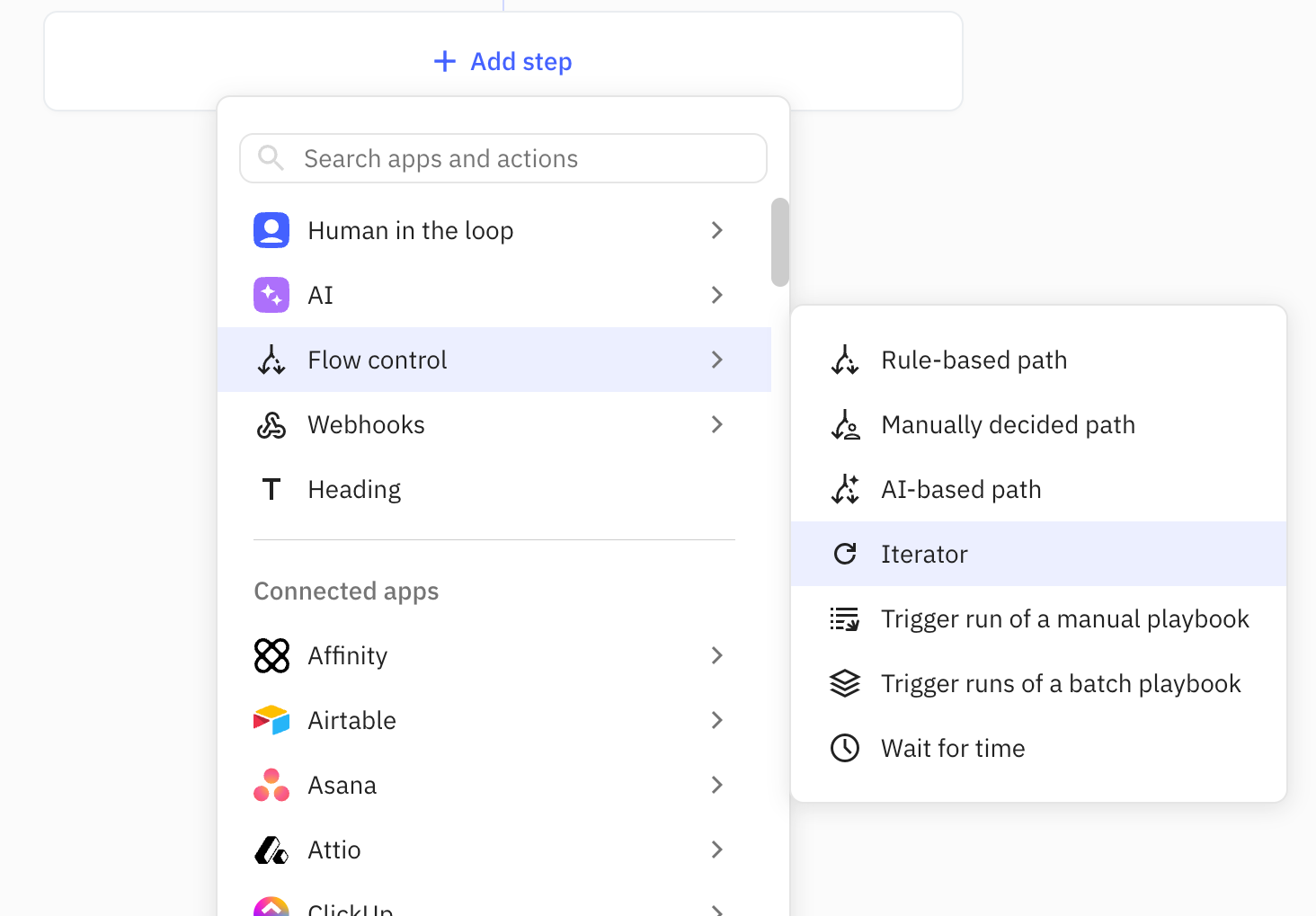
Wow, this is our biggest Product Update to date! April has been jam-packed with major feature launches of which we’re all incredibly proud.
Each of them opens up a realm of new automation use cases:
- Four brand-new Human-in-the-Loop steps that let you automate processes that previously couldn’t be
- An extremely flexible AI step that lets you use models from OpenAI, Google, Anthropic and Groq
- Iterators that let you perform steps for each item in a List
- Batch triggers to (periodically) kick off multiple runs of a playbook at once
Let’s dive into each of them.
1. New Human-in-the-Loop steps
Adding human steps to otherwise fully automated workflows has always been a unique capability of Relay.app.
Our fundamental belief is that there are so many repeated processes that should really be automated but cannot with today’s traditional automation tools—simply because human judgment is needed somewhere along the automated steps.
This only becomes more apparent with the incredible role that AI is starting to play as part of our automated workflows. AI can supercharge almost any automation.
That said, we’re not always comfortable to blindly trust the output of an AI model, especially if it involves communications to e.g. a new customer.
Four new human steps
Therefore, we launched for brand new Human-in-the-Loop steps that you can use in any playbook in Relay.app:
- Approvals will pause a playbook run until its assignee gives their go-ahead to continue
- Data inputs will request an assignee for variable data input, i.e. when it’s missing from an app
- Tasks will assign a “real world task” to its assignee, and continue the run when it’s completed
- Manual path selections will ask the assignee to decide which Path to take (instead of rule-determined paths)

Any of these steps can be assigned directly to a person over email or Slack, or to an entire Slack channel. It’s even possible to dynamically assign these human steps to a different person for every run, by creating a Role.
Notify assignees over Slack or Email
Email and Slack notifications will let the assignee of a human step complete it right away, or open Relay.app if they need additional context.

Read more about Human-in-the-Loop automation here.
2. A new, flexible AI Step
Ever since our launch in October 2023, we’ve strongly believed in making the immense power of AI available in workflow automation – in a way that’s easy to use, contextually relevant and of course incredibly powerful.
Relay.app’s built-in AI Extract and AI Summarize features are available across all our app integrations, and are really straightforward to use.
We’ve been hearing from various customers that they wish to use more AI power across their automations. Specifically, customers wanted to:
- Write their own prompts, and specify the output “format” to use in their playbook
- Pick the AI model they’d like to use
Introducing the ‘Custom prompt’ AI step
To unlock this next level of flexibility, we just launched a new Custom Prompt AI step. As we will see next, it’s very powerful.

Pick your model of choice (GPT, Gemini, Claude, LLaMA, Mixtral)
Firstly, the new Custom Prompt step will let you pick amongst many AI models from OpenAI, Google, Anthropic and Groq. Simply select the model you’d like to run your prompt by, and sign in to the provider.
And perhaps the best part: reasonable OpenAI ChatGPT 3.5 usage is on us!

Write your own prompt and construct the output
The real value of this new step is that it doesn’t just let you provide your own prompt, it’s now very easy to “attach” specific resources from across your playbook to your prompt, so that the AI model knows what to reason about.
Second, you can specify the output you’d expect to an extremely high level of detail. We’ve made the simple cases very easy (i.e. where you just expect a text response), while also letting you specify entire object structures including lists and nested properties.
And for each field, you can specify whether it’s required or not. This makes the output a lot more predictable and usable across the steps that follow.

3. Iterators
A few weeks ago, we launched the most-requested feature by our customers: Iterators. They let you perform one or more actions for each item inside a list.

For example, if you want to add all guests of a newly scheduled Calendly event to HubSpot, simply add an Iterator in your playbook that performs this action for each person in the list of guests (which are automatically available via the output of the Trigger)
With the launch of Iterators, we’ve also enhanced support for List variables. You can now also obtain lists of items from app integrations via ‘Find <items>’ steps.
Learn a lot more about Iterators and various use cases in this post.

4. Batch triggers
Last but not least, Batch Triggers. Following up on our Iterators launch, we launched a related feature: the ability to trigger individual runs for multiple resources (i.e. rows, records, tickets, contacts) in batches.
For example, you may use batch triggers to set off mail merge campaigns, or kick off a playbook on a weekly periodic schedule that checks in with the Account Executives for all stale Deals in your sales pipeline in HubSpot.
There are two Batch Trigger variants:
- Start a batch manually every time
- Start a batch periodically on a recurring schedule

Both Batch Trigger variants essentially work the same:
- First you’ll pick the app and resources type to trigger runs for (e.g. rows in a specific spreadsheet)
- Then you’ll optionally specify filter rules (to only trigger on resources that match certain conditions)
- Finally you’ll create the playbook with all the steps that should be done for run
The only difference is that for the recurring Batch Trigger you’ll have to specify the periodicity on which runs should be kicked off.
Batch Triggers are great for use cases like mail merges or a daily support ticket scrub. Read more about Batch Triggers and how to set up a mail merge playbook using Gmail and Google Sheets this post.

See the full list of updates below, and don’t hesitate to reach out with your top feature requests!
Changelog
Core product improvements
- New Human-in-the-Loop steps
- New 'Custom Prompt' AI Step
- Iterators
- Batch triggers
- More improvements to Webhooks
- Ability to re-run completed runs
- Support to add deadlines to wait steps
- Hover cards for variable and object chips
- Dozens of quality-of-life improvements
New integrations
Asana
- Update task
Brevo 🆕
- Trigger: Contact added
- Update contact
- Update or create contact
Google Docs
- Export document
Google Drive
- Upload file
Google Sheets
- Export spreadsheet
Google Slides
- Export presentation
Salesforce
- Trigger: Record added
- Trigger: Contact record created
- Attach file to record
Signeasy 🆕
- Envelope signed
- Download signed envelope
- Send envelope to sign
Slack
- Unarchive channel

